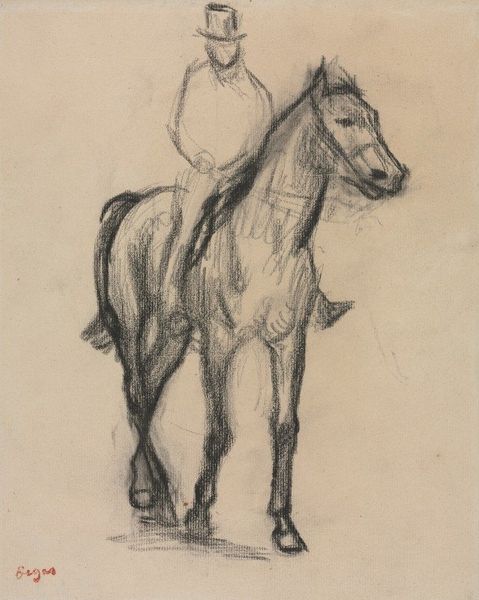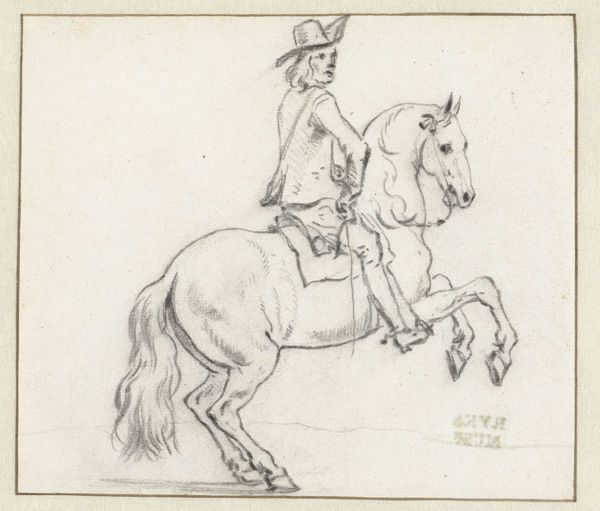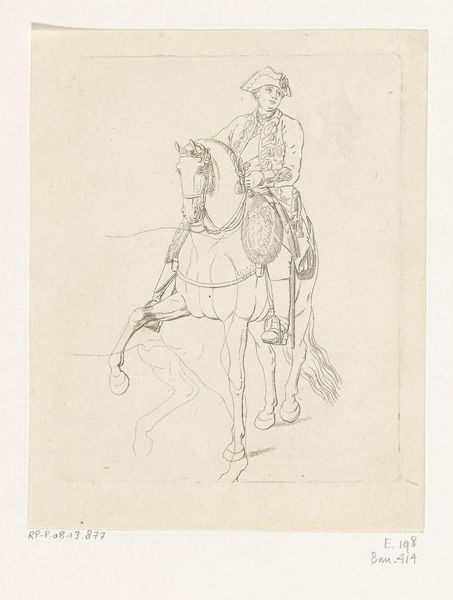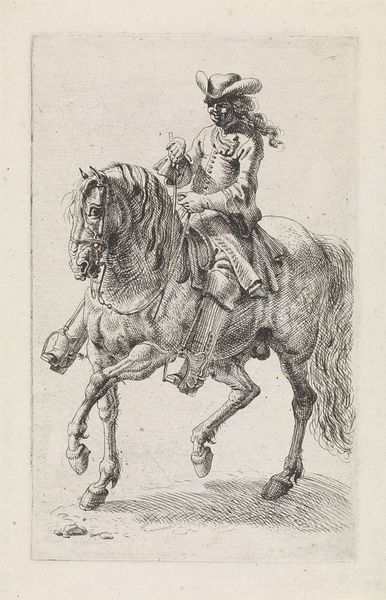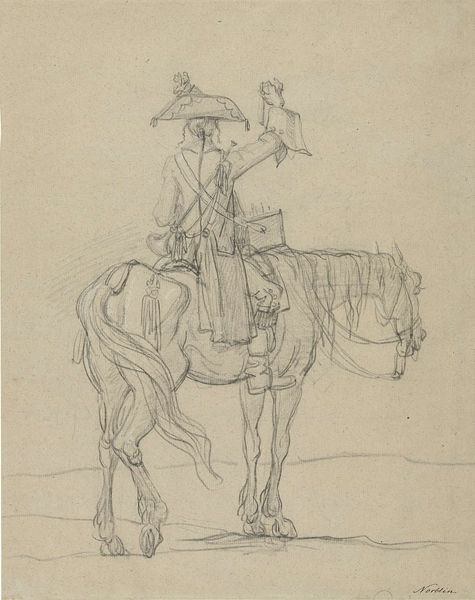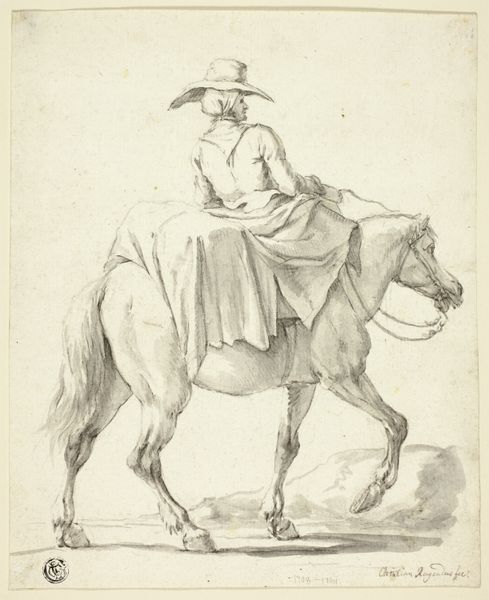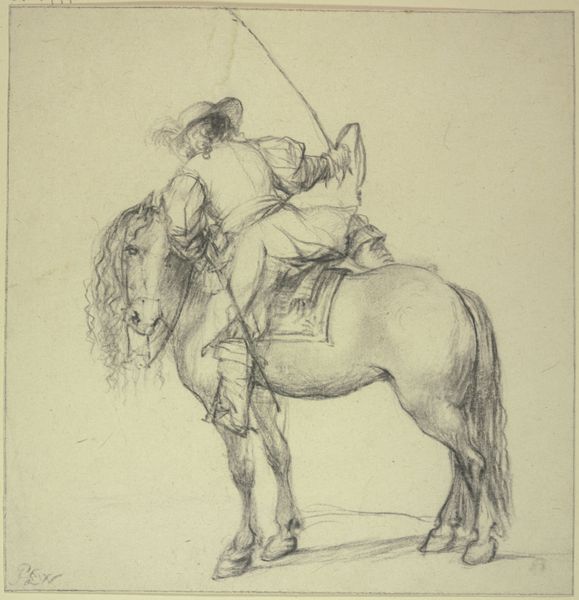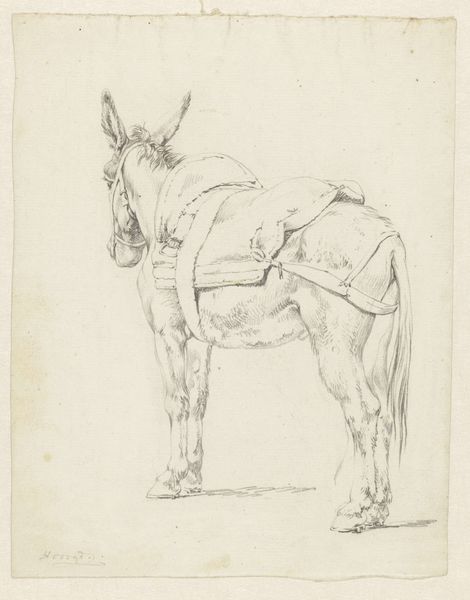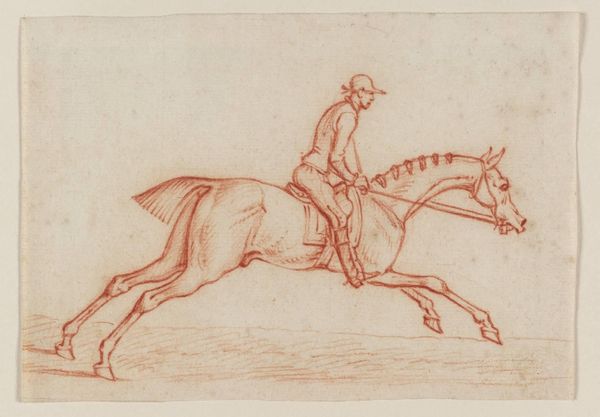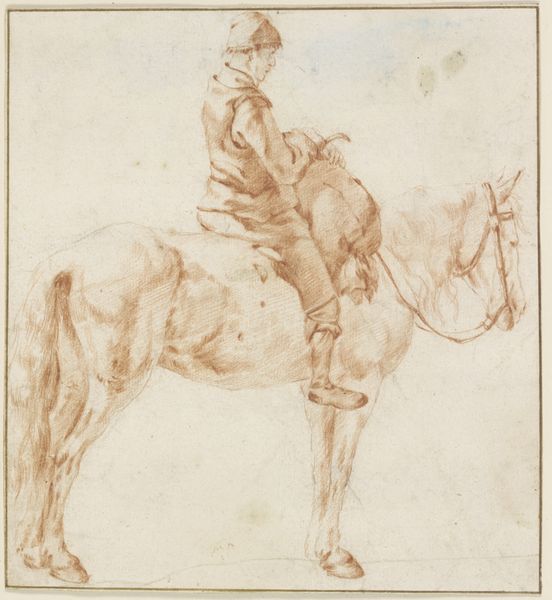
Dimensions: support: 257 x 174 mm
Copyright: CC-BY-NC-ND 4.0 DEED, Photo: Tate
Editor: This is "Equestrian Design: The Volte Renversée to the Right" by John Vanderbank. It seems to be a pen and wash drawing. What strikes me is the precision, almost like a diagram. What do you notice about the making of this piece? Curator: I see a clear emphasis on the material conditions of aristocratic life. Note the deliberate depiction of horsemanship, a skill tied to leisure and class. The artist’s choice of pen and wash, a relatively accessible medium, hints at the emerging market for art beyond traditional patronage. Editor: So, the materials and skill reflect a specific social and economic context? Curator: Precisely. This wasn't just about aesthetics; it was about representing and perhaps even selling a lifestyle through accessible means. Do you see how the very production speaks to changing societal structures? Editor: Absolutely. It reveals a lot about the consumption and display of status in that era. Thanks, I never thought of it that way.
Comments
tate 8 months ago
⋮
http://www.tate.org.uk/art/artworks/vanderbank-equestrian-design-the-volte-renversee-to-the-right-t08274
Join the conversation
Join millions of artists and users on Artera today and experience the ultimate creative platform.
tate 8 months ago
⋮
Throughout his life Vanderbank suffered periods of financial crisis due to his extravagant way of living. He was nevertheless a dedicated artist, running a successful portrait practice, and was co-founder of the St Martin's Lane drawing academy (which unfortunately folded in 1724 when his debts necessitated a hasty flight to France). He also produced drawings for engraving as book illustrations. This equestrian design relates to the 1729 publication 'Twenty Five Actions of the Manage Horse', a manual on horsemanship and dressage. Vanderbank's designs were engraved by Joseph Sympson, who tells us in the preface to the book that Vanderbank went to the trouble of purchasing a horse to use as a model. Gallery label, September 2004
